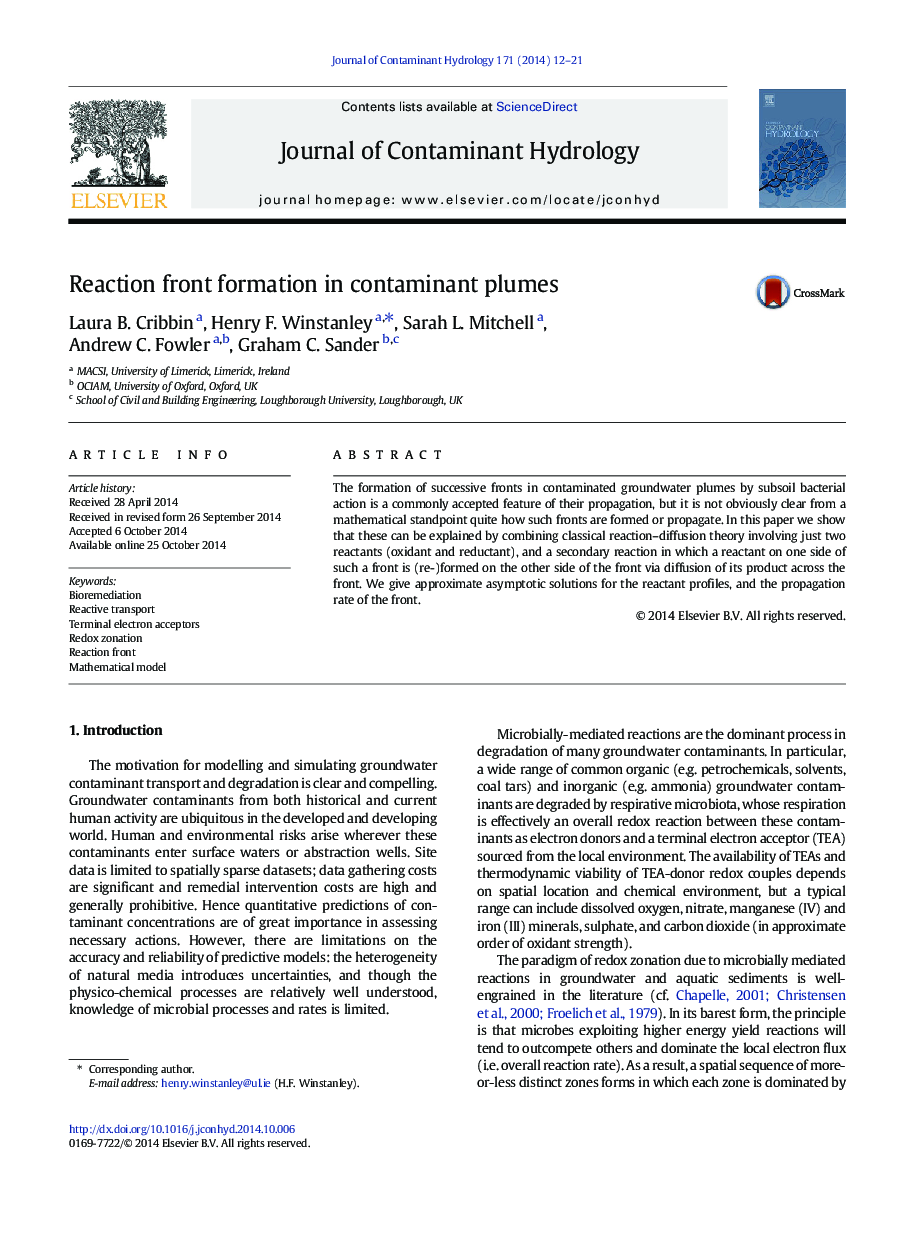| Article ID | Journal | Published Year | Pages | File Type |
|---|---|---|---|---|
| 4546499 | Journal of Contaminant Hydrology | 2014 | 10 Pages |
•Analytical model addresses redox zonation with front formation due to fast reactions.•Front formation depends on secondary reaction between TEA(n) and TEA-product(n − 1).•Asymptotic solution provides close approximation even at modest Damkohler number.•Method may offer possible semi-analytical efficiency enhancement to numerical codes.
The formation of successive fronts in contaminated groundwater plumes by subsoil bacterial action is a commonly accepted feature of their propagation, but it is not obviously clear from a mathematical standpoint quite how such fronts are formed or propagate. In this paper we show that these can be explained by combining classical reaction–diffusion theory involving just two reactants (oxidant and reductant), and a secondary reaction in which a reactant on one side of such a front is (re-)formed on the other side of the front via diffusion of its product across the front. We give approximate asymptotic solutions for the reactant profiles, and the propagation rate of the front.
